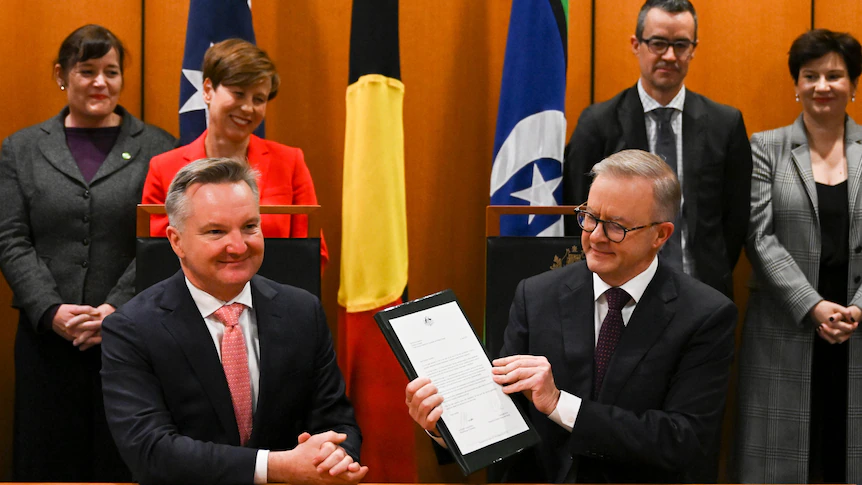By Jake Evans
Copyright abc

Prime Minister Anthony Albanese and Climate Change Minister Chris Bowen are due to hand down a 2035 target more ambitious than Australia’s Canadian or New Zealand allies, but below the United Kingdom’s, which is one of the most ambitious in the world.
The next major climate commitment, one of the most significant decisions Labor will make this term, will strike a middle path between like-minded nations.
It is expected to be committed in a meeting of cabinet today, before being taken to New York next week, where other world leaders will also gather to confirm their 2035 targets at a meeting of the United Nations General Assembly.
The commitment follows the release of the first National Climate Risk Assessment on Monday.
That report warned 1.5 million people could be affected by sea levels rising by 2050, an increase in heat deaths and frequent flooding in major cities if global warming rises above 2 degrees Celsius.
The lift in ambition will require the government to build on climate policies that it developed last term, and an accompanying plan that steps out a pathway to net zero emissions by 2050 is expected to describe some of the policy levers available to do so.
The federal government considers its approach to setting a target unique among its allies, settling on a target based on ground-up analysis of policy measures and what emissions reductions could be expected from those policies.
Its 2030 target to cut emissions by 43 per cent was based on modelling of a suite of policies that were expected to cut emissions by that amount — and the government has approached 2035 with a similar mindset.
Policies like yesterday’s announcement of a $1.1 billion fund to support production of green aviation and diesel fuels will be fed into modelling to determine an achievable target.
Climate and business anxiously await target announcement
This morning, cabinet is expected to deliberate on advice handed to it by the Climate Change Authority, before Mr Bowen makes a final recommendation on a 2035 target to his colleagues.
Treasurer Jim Chalmers confirmed yesterday that his department had modelled a 2035 target within the range the Climate Change Authority had consulted on, which was between a 65 and 75 per cent reduction.
The CCA’s advice will be released tomorrow, along with Treasury modelling — however, its final advice may be lower than that 65 to 75 range, as it was forced to reconsider the target with the election of United States President Donald Trump and America’s subsequent retreat from climate action.
Mr Bowen repeated on Wednesday that the government’s target would meet its dual aims of ambition and achievability.
“Based on the best evidence and the best forecasts before us from the Climate Change Authority and other experts right across the government, that’s what we’ll be doing,” he said.
The Intergovernmental Panel on Climate Change warned in 2021 that in order to keep global warming within a 1.5C increase on pre-industrial levels, the world would need to cut emissions by 68 per cent by 2035.
Most countries are yet to submit targets for 2035, but those that have, generally have fallen well short of the IPCC’s mark.
The Climate Change Authority says based on current commitments, the world is on track for 2.9C of warming — assuming those commitments are actually met.
While Australia only accounts for about 1 per cent of direct emissions, Labor MP Jerome Laxale told the ABC the nation had an opportunity to be an example for others of how to achieve an ambitious emissions reduction target.
“The number or the range to be announced this week is very important. But you know, to me it’s not a ceiling. We need to get to net zero as soon as possible,” Mr Laxale said on Wednesday.
Formally, the Coalition continues to review its climate policy — but amid infighting over whether to keep a net zero commitment at all, the party has warned against pursuing emissions reductions “at any cost”.
Climate groups have argued that any target below 71 per cent would be less than the commitments already made by the states and territories, and so a backwards step.
That figure was drawn from a 2024 Climateworks report that concluded state and territory targets would add up to an estimated 66 to 71 per cent reduction in emissions by 2035.
The Business Council of Australia, however, has cautioned that a target in the 70s or higher would cost hundreds of billions in lost export value.
Both corners await a target that will have significant consequences for communities, the economy and the environment over the next decade and into the future.



